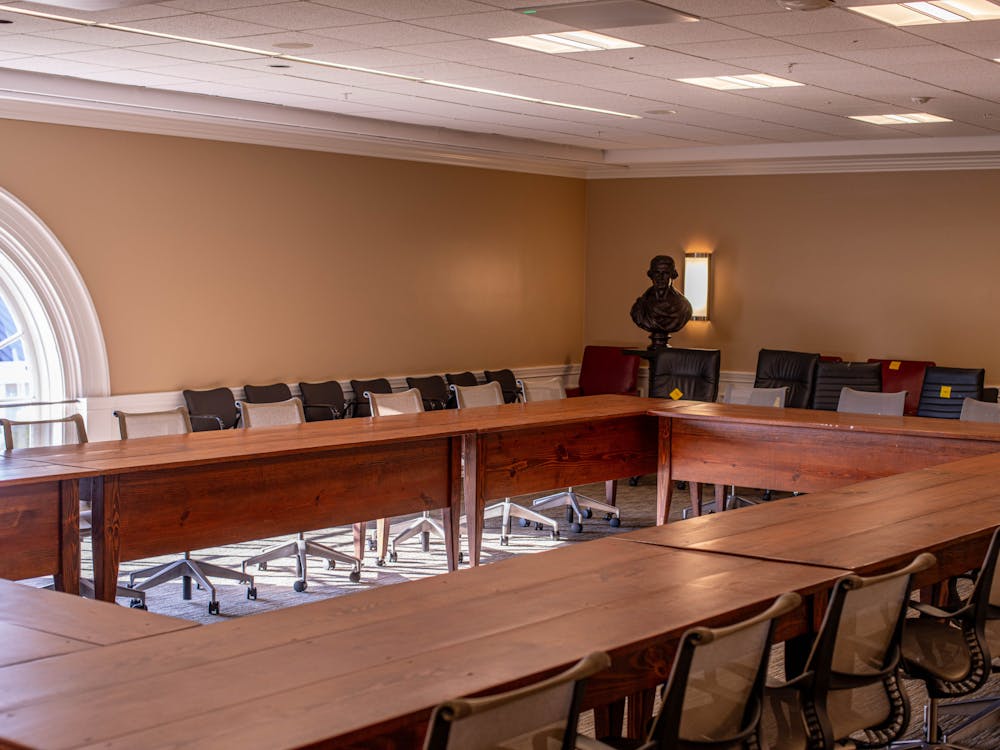An ongoing collaboration involving the University’s Nursing, Medicine and Engineering schools has resulted in the creation of a simulator designed to help fight prostate cancer. The simulator, known as the Virginia Prostate Exam Simulator, is a human patient simulator created by professors, undergraduate students and graduate students that is designed to help teach students how to effectively detect prostate cancer.
Medical students have had limited opportunities to perform prostate examinations in the past, Emergency Medicine Prof. Marcus Martin noted, adding that the University created the Medical Simulation Center in 2004 to research and create better simulation techniques, such as the VPES. Since that time, the program has been improved and University community members have continued to benefit from the opportunities for learning offered by VPES and other simulators.
“One of the tasks for the simulation center was to develop a life-saving techniques workshop for Medical students,” Martin said, which could teach “them procedures without the use of live animals,” a technique previously used by other schools. Other forms of earlier prostate examination included non-interactive simulators that were unrealistic, unable to provide feedback and easily memorized by students, said Gregory Gerling, assistant systems and information engineering professor. Matrin and Gerling, along with Asst. Nursing Prof. Reba Childress, collaborated on the VPES project to provide students with a more realistic learning opportunity.
The VPES combines two major concepts, Gerling said. First, the simulator, which is a model consisting of four prostates filled with small water balloons, can be changed on demand by inflating or deflating the balloons inside the model.
“There are over 100 possible abnormalities you can turn on and off in different combinations,” Gerling said, noting this is different from older models that could not be changed and only represented “three to five tumors.”
Secondly, the simulator can monitor a student’s finger pressure on the prostate.
“What we’re trying to do is correlate patterns students may use” while training with the simulator and relate that to their performance, Gerling said. “We’re trying to figure out what good performers are doing” in order to then teach those patterns and techniques to others, he added.
The VPES is able to “provide feedback instantly for the student or at a debriefing later,” Martin said. “The instructor can look at a monitor and provide feedback right away and also provide graphic evidence of whether the student palpated the tumor or not.”
This feedback includes the location of the simulated tumors, whether the student found the tumor, how many tumors there were and the student’s technique during the examination.
Martin said physicians and nurse practitioners frequently conduct examinations on a regular basis, so teaching tools like the VPES could significantly improve training and palpation techniques. He also noted that early detection and proper training in prostate examinations will greatly increase the survival rate of the many men who are diagnosed with prostate cancer.
“Prostate cancer is the most common form of cancer for men in the US,” with “200,000 new cases diagnosed and 30,000 deaths each year in the US,” Martin said. “One in five men will develop prostate cancer in their lifetime.”
The University is the only school that has a simulator like the VPES with which to train students, Martin said, noting that he would “like to see this simulator utilized at other schools around the country and even around the world.”
The simulator will continue to be worked on and improved upon, Gerling noted. Currently, students are analyzing actual samples of tumors to ensure the tumors used in the simulation are realistic in their size and stiffness, he said, adding that there is currently interest in commercializing the project.






